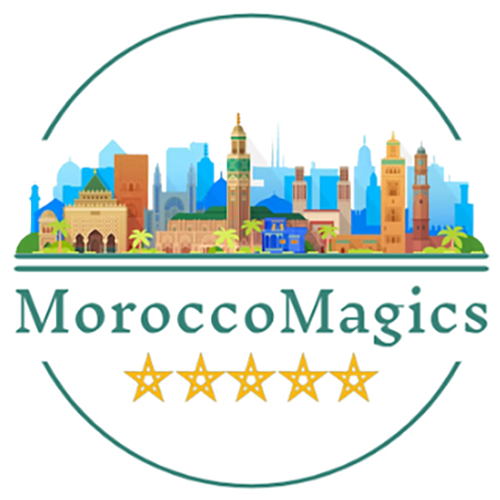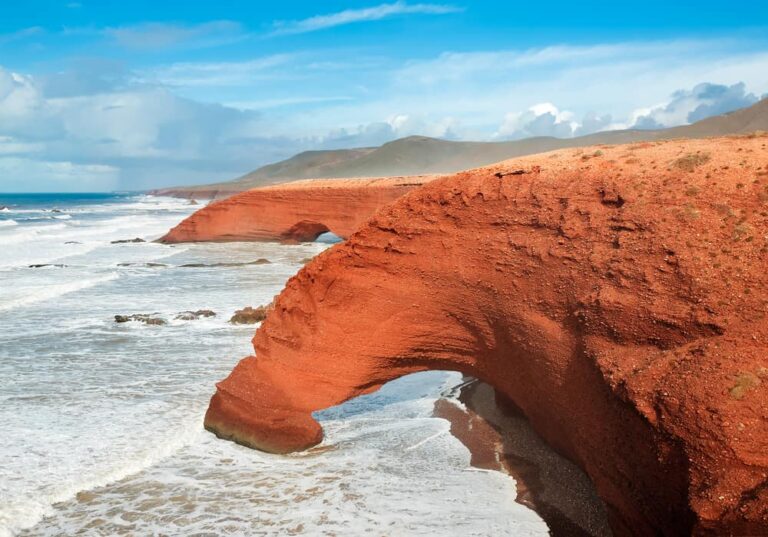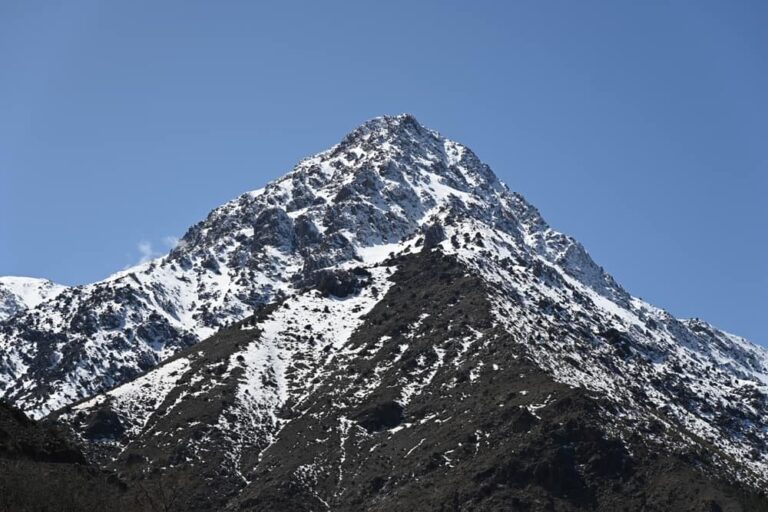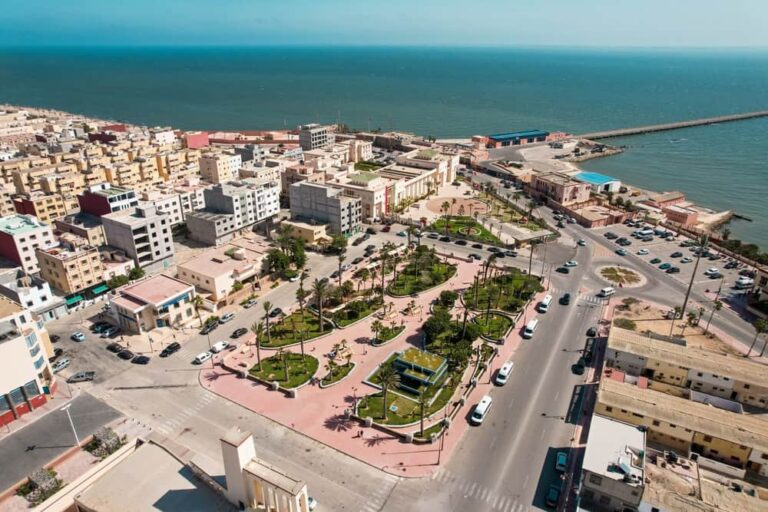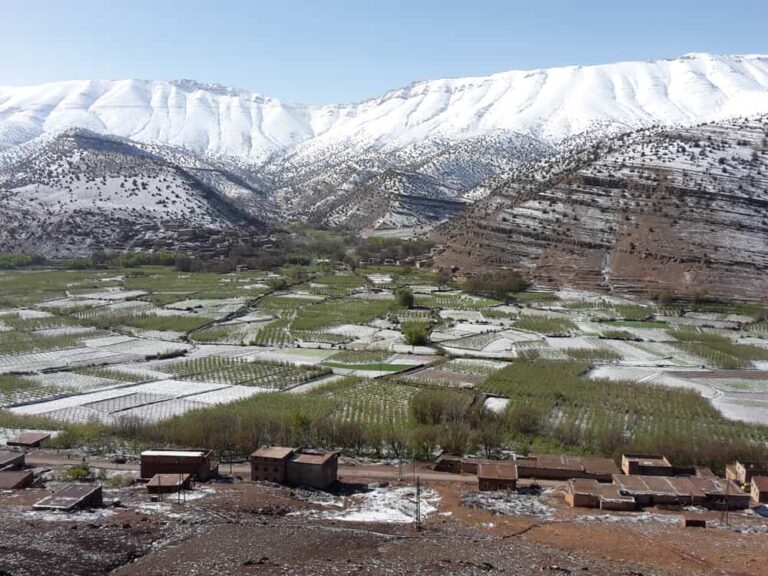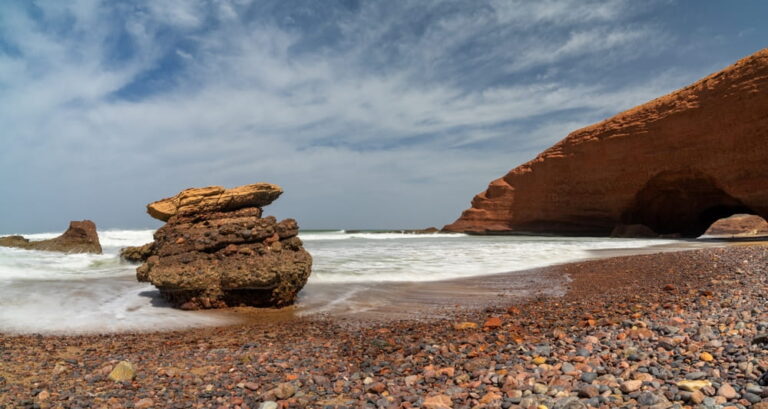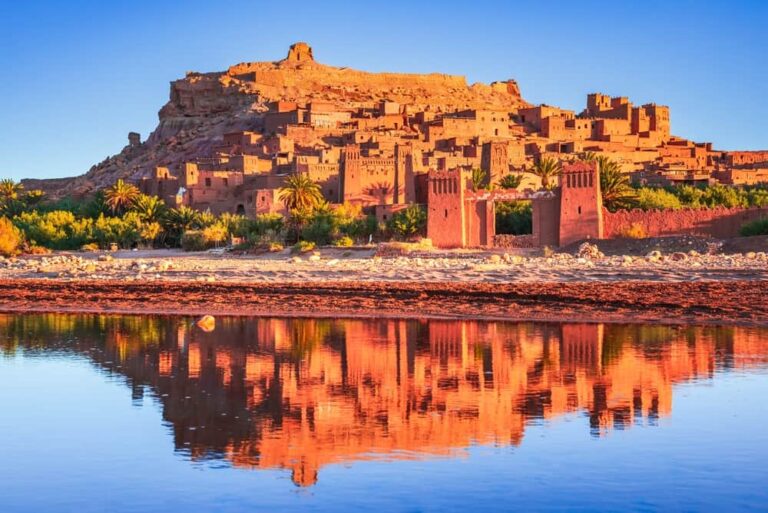Meknes Travel Guide
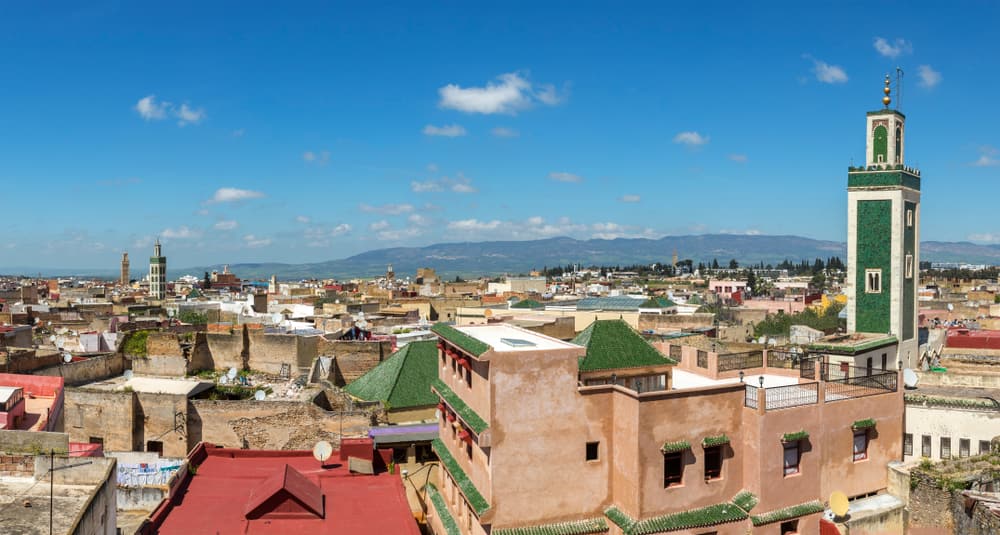
Meknes is one of Morocco’s historic gems, known for its rich culture and fascinating history. Situated in the Fès-Meknès region, this city offers a blend of ancient traditions and modern amenities, making it an ideal destination for travelers. From exploring its grand palaces and impressive gates to wandering through its bustling medinas, Meknes is a place where the past meets the present.
For adventure seekers, Meknes provides a variety of experiences. Whether you’re a history enthusiast excited to visit the Mausoleum of Moulay Ismail or someone looking to relax in a traditional riad, there is something for everyone. The city’s Andalusian and Moorish architecture is a visual treat, while the local cuisine offers mouth-watering flavors.
This guide will cover everything you need to know for a smooth trip to Meknes. We’ll explore the best ways to get there, top places to stay, and must-see attractions.
Getting to Meknes
Meknes is easily accessible, with multiple options available depending on your travel preferences and budget. Whether you’re flying internationally or traveling within Morocco, there are several ways to reach this beautiful city.
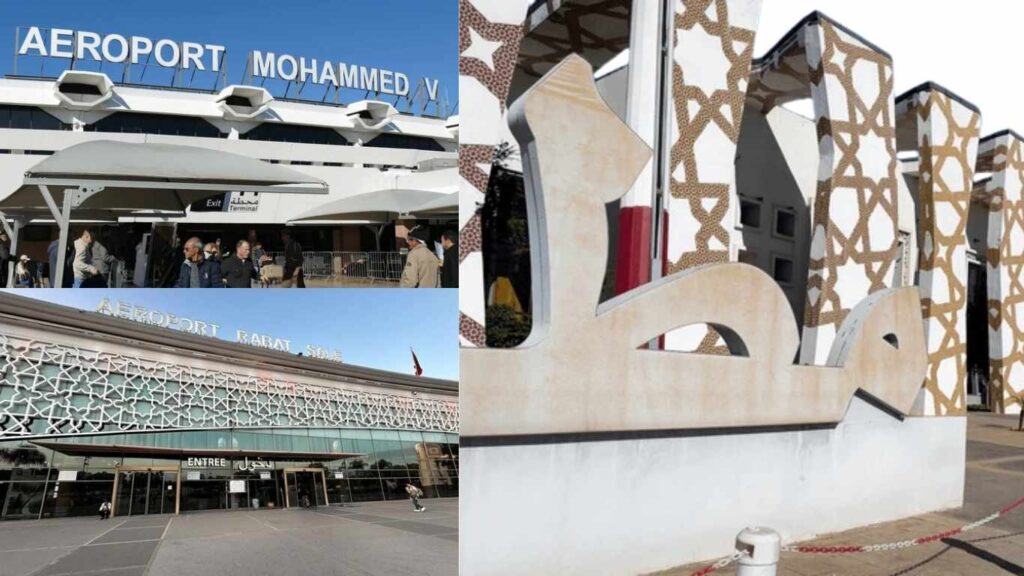
International Travel Options
While Meknes doesn’t have its own airport, you can arrive via several international airports located nearby, making it easy to reach the city from almost anywhere in the world.
Casablanca Mohammed V International Airport (CMN): This is the largest and busiest airport in Morocco, handling most international flights. It’s located about 250 kilometers (155 miles) from Meknes, with regular trains and buses available for further travel.
Fes Saïss Airport (FEZ): Fes Saïss is the closest airport to Meknes, located about 70 kilometers (43 miles) away. It serves primarily European destinations, making it a good option for travelers coming from cities like Paris, London, or Barcelona.
Rabat-Salé Airport (RBA): Another nearby option, Rabat-Salé Airport is around 150 kilometers (93 miles) from Meknes. It serves several European cities and is less busy than Casablanca.
Direct Flights to Morocco
If you’re traveling internationally, you can find direct flights to Morocco from several major cities:
- North America: Cities like New York, Washington, and Montreal offer direct flights to Casablanca.
- Europe: Most European capitals have direct flights to Casablanca, Fes, or Rabat. Popular routes include Paris, Madrid, London, and Amsterdam.
- Middle East: Cities like Doha, Dubai, and Abu Dhabi also offer direct flights to Morocco.
Connecting Flights
For travelers from smaller cities or regions without direct flights, connecting through major European or Middle Eastern hubs is common. Some popular connecting hubs include:
- Paris Charles de Gaulle (CDG): A common connecting airport for flights to Morocco.
- Madrid Barajas (MAD): Ideal for connecting to Fes or Rabat.
- Istanbul Airport (IST): A major connection point for travelers from Asia or Europe.
Transportation from the Airport
Once you’ve landed at any of the nearby airports, getting to Meknes is relatively straightforward.
Trains: From Casablanca Mohammed V International Airport, you can take a train directly to Meknes. Trains are available every few hours and are one of the most comfortable options, offering scenic views of the Moroccan countryside. The trip takes about 3-4 hours from Casablanca, and about 1 hour from Fes.
Buses: Buses are a more budget-friendly option and are available from all major airports. The journey takes a bit longer than by train but is ideal for travelers looking to save money.
Private Transport: Hiring a private car or taking a taxi from any of the airports to Meknes is a flexible and convenient option. This is particularly useful if you’re traveling in a group or have a lot of luggage. The cost can be higher, but it saves time and offers comfort.
Getting to Meknes from Other Cities in Morocco
Meknes is well-connected to other Moroccan cities, making it easy to travel domestically.
Trains: Morocco’s train system is highly efficient, with routes connecting major cities. Trains to Meknes are frequent, especially from Casablanca, Rabat, and Fes. The train ride from Fes to Meknes takes just under an hour, while the trip from Casablanca takes around 3.5 hours.
Buses: If you’re traveling on a budget, buses operated by CTM and Supratours are a reliable and affordable option. Buses travel between Meknes and most major Moroccan cities, though they tend to be slower than trains.
Private Transport: Renting a car or hiring a private taxi is another option. This offers the flexibility to stop at scenic points or visit other destinations along the way, such as Moulay Idriss or Volubilis.
Travel Tips and Recommendations
Before heading to Meknes, a few simple tips can help you make the most of your trip. From packing essentials to navigating the city, these travel recommendations will ensure a smooth and enjoyable visit.
Best Travel Methods for Different Budgets
Budget Travelers: Buses are the cheapest option but take longer. Second-class train tickets are another affordable option for getting around Morocco.
Mid-Range Travelers: First-class train tickets offer more comfort and reserved seating, ideal for longer journeys.
Luxury Travelers: Private car hires or premium airport transfers provide the most comfort and flexibility, allowing you to travel at your own pace.
Safety Tips for Travel
- Use registered taxis or ride-sharing apps to avoid unregulated transportation services.
- Keep your valuables and personal items close, especially when traveling by public transport.
- Always confirm your transportation arrangements in advance, particularly if you’re arriving late at night.
Packing Tips for Meknes
Clothing: Light, breathable clothing is essential if you’re visiting during warmer months. However, Morocco is a conservative country, so it’s advisable to wear modest clothing, especially when visiting religious sites.
Shoes: Comfortable walking shoes are a must, as the medina’s cobbled streets can be tricky to navigate.
Sunscreen & Hats: The Moroccan sun can be quite intense, especially in summer. Be sure to pack a hat and sunscreen for protection.
Best Time to Visit Meknes
Choosing the right time to visit Meknes can make a big difference in your travel experience. The climate, seasonal events, and crowd levels all vary depending on the time of year.
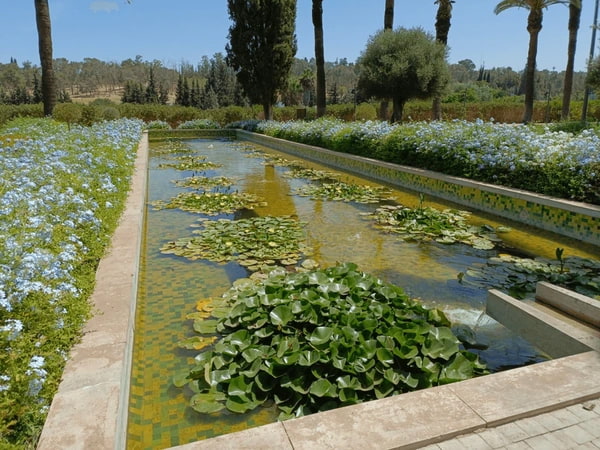
Ideal Months for Visiting Based on Weather and Activities
Spring (March to May): Spring is arguably the best time to visit Meknes. Temperatures are mild, with daytime highs ranging from 68°F to 77°F (20°C to 25°C). The city’s gardens and parks come alive with blooming flowers, making it a perfect time for sightseeing.
Fall (September to November): Another ideal time to visit, fall offers similarly mild temperatures and fewer crowds compared to the spring. The weather is comfortable, making it easy to explore the city’s attractions.
Winter (December to February): Winters in Meknes are cooler, with daytime temperatures ranging from 50°F to 59°F (10°C to 15°C). While it’s not the best time for outdoor activities, it’s a great time to enjoy the city’s cultural and historical sites without large tourist crowds.
Summer (June to August): Summer is the hottest time of the year, with temperatures often reaching over 90°F (32°C). However, this season is also filled with local festivals and events.
Seasonal Attractions and Activities
- Spring: This season is perfect for visiting outdoor attractions like the city’s parks, gardens, and ancient Roman ruins at Volubilis.
- Summer: Despite the heat, summer is a lively time to visit Meknes. The city hosts numerous festivals, including the International Festival of Volubilis, which celebrates Moroccan music, dance, and art.
- Fall: The pleasant fall weather is ideal for visiting the city’s historical sites, such as the Mausoleum of Moulay Ismail or Bab Mansour.
- Winter: Winter is perfect for those looking to avoid crowds. Cultural attractions and local markets are quieter, and prices tend to be lower.
Dealing with the Heat in the Summer Months
If you visit during the summer months, it’s important to plan ahead for the heat:
- Stay indoors during the hottest part of the day (usually between 12 PM and 4 PM).
- Hydrate frequently and carry a water bottle with you at all times.
- Wear light, loose clothing made from breathable fabrics like cotton or linen.
- Visit indoor attractions like museums, mosques, or shopping centers during peak heat hours.
Meknes Festivals and Events
Meknes is known for its cultural festivals that reflect the city’s rich heritage:
- Moussem of Moulay Idriss: This religious festival, held annually, honors the founder of the city. It’s one of the most important pilgrimages in Morocco.
- International Festival of Volubilis: Held just outside Meknes, this festival celebrates Moroccan and international art and music.
Tourist Crowds and Peak Seasons
Spring and Fall are the busiest seasons, as they offer the best weather for sightseeing and outdoor activities.
Summer sees an influx of local tourists, especially during festival season. However, international tourism tends to slow due to the heat.
Winter is the quietest season, with fewer tourists and more relaxed atmospheres in the medina and markets.
Where to Stay in Meknes?
Meknes has a variety of accommodation options to suit every budget, from luxurious riads to budget-friendly hotels. Your choice of lodging will depend on the type of experience you’re seeking.
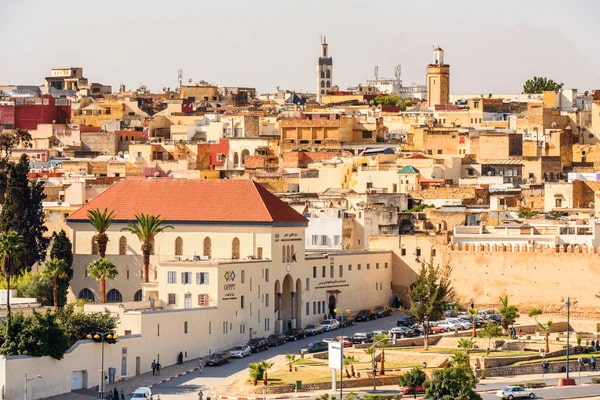
Types of Accommodations
Riads: Traditional Moroccan guesthouses that offer a more authentic experience. Riads are often located in the medina and feature beautiful courtyards, intricate Moroccan architecture, and personalized service.
Hotels: Modern hotels offer more amenities, such as air conditioning, restaurants, and Wi-Fi. These are typically located in the Ville Nouvelle (new city), away from the hustle and bustle of the medina.
Guesthouses and Hostels: For budget travelers, Meknes also has guesthouses and hostels that offer basic amenities at a lower cost.
Best Neighborhoods for Staying in Meknes
Medina: The old city is perfect for those who want to immerse themselves in Moroccan culture. The narrow streets, traditional markets, and proximity to historical sites make it ideal for travelers interested in history and local life.
Ville Nouvelle (New City): This area offers modern accommodations, wider streets, and more dining and shopping options. It’s quieter than the medina and offers more comfortable accommodations for families or travelers looking for more modern conveniences.
Recommended Riads and Hotels
Riad Meknès: A restored traditional riad located close to the medina’s main attractions. It offers a glimpse into Moroccan culture with its beautiful décor and personalized service.
Hotel Transatlantique: A classic hotel offering modern amenities, such as a pool and restaurant, and is situated in the Ville Nouvelle.
Palais Faraj: Although located in Fes, this luxurious riad offers opulent surroundings and is perfect for travelers who want a luxurious experience with stunning views of the medina.
Choosing Between Traditional Riads and Modern Hotels
Traditional Riads: Ideal for travelers seeking a cultural experience. Riads provide personalized service and feature traditional Moroccan architecture. However, they may not offer modern conveniences like elevators or large bathrooms.
Modern Hotels: These provide standard amenities like Wi-Fi, room service, and more spacious rooms. They’re ideal for travelers who prefer comfort and ease over cultural immersion.
Exploring Meknes
Meknes is a city rich in history and culture, offering a variety of activities for all types of travelers. Whether you prefer wandering through the medina or visiting historical sites, Meknes has plenty to explore.
Walking Through the Medina
The Medina of Meknes is a UNESCO World Heritage site and one of the city’s biggest attractions. As you walk through the narrow streets, you’ll be immersed in the sights, sounds, and smells of a traditional Moroccan marketplace.
Bab Mansour: One of the most famous gates in Morocco, known for its size and detailed craftsmanship. It’s an iconic symbol of Meknes.
Souks (Markets): The medina is home to several souks, where you can buy traditional Moroccan goods, including spices, textiles, leather products, and handmade pottery.
Self-Guided vs. Guided Tours
Self-Guided Tours: Meknes is small enough to explore on your own. With a map and a good sense of direction, you can visit major sites like the Mausoleum of Moulay Ismail, Bab Mansour, and the Medersa Bou Inania.
Guided Tours: For travelers who want to dive deeper into the history and culture of Meknes, a guided tour is recommended. Local guides can offer insights and stories you might miss on your own.
Getting Around Meknes
Walking: Many of Meknes’ attractions are located within walking distance of each other, particularly in the medina. Comfortable shoes are recommended as the streets are often cobbled.
Petit Taxis: For longer distances, petit taxis are readily available and inexpensive. Be sure to use a metered taxi or agree on a price before starting your journey.
Bicycles: Some travelers prefer to rent bicycles to explore Meknes. This is a great option if you want to cover more ground but still experience the city up close.
Things to Do in Meknes
Meknes is a city steeped in history, culture, and vibrant local traditions, offering an array of activities and attractions that cater to all kinds of travelers. Whether you’re a history buff, a lover of architecture, or a food enthusiast, Meknes provides countless opportunities to explore Morocco’s rich heritage. Below is a detailed look at the must-see sights and activities that make Meknes a special destination.
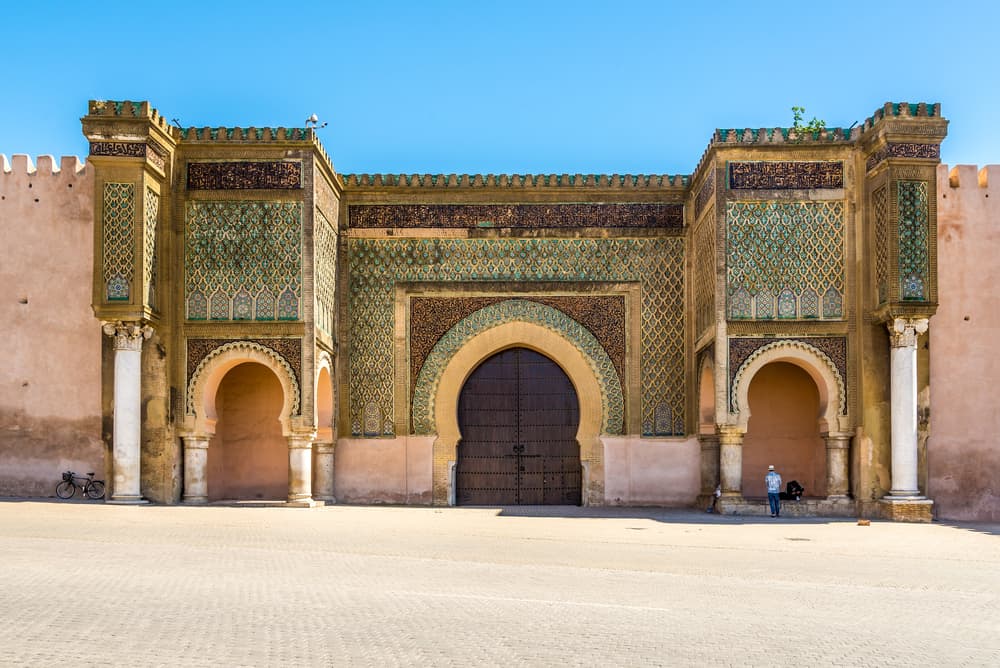
Top Attractions in Meknes
- Bab Mansour
Description: Bab Mansour is one of Morocco’s most famous and grand gates, symbolizing the city’s imperial history. It was completed in 1732 under the reign of Sultan Moulay Ismail, who wanted it to reflect the grandeur of his empire.
Key Features: The gate’s architecture is stunning, featuring intricate zellij (tilework), carved marble columns, and Arabic calligraphy. The green and white tiles, combined with the massive wooden doors, make it a popular spot for photographs.
Tip: Visit in the late afternoon or early evening when the lighting is ideal for capturing the details of this impressive structure.
- Mausoleum of Moulay Ismail
Description: This mausoleum is the final resting place of Sultan Moulay Ismail, the ruler who made Meknes the capital of Morocco during his reign. The building is not only a spiritual site but also a remarkable example of Moroccan architectural beauty.
Key Features: The mausoleum’s courtyard, with its grand arches and zellij-tiled walls, is serene and awe-inspiring. Non-Muslims are not allowed inside the actual tomb, but the surrounding areas are open to all visitors.
Tip: Dress modestly when visiting, as this is a religious site. Women should cover their shoulders, and men should avoid wearing shorts.
- Heri es-Souani (Royal Granaries and Stables)
Description: These granaries and stables are an incredible testament to the engineering skills of Sultan Moulay Ismail’s time. The site was used to store grain and house over 12,000 horses, reflecting the sultan’s immense power and wealth.
Key Features: The stables and granaries are made of thick walls to regulate temperature, keeping the grain cool and fresh even during the scorching Moroccan summers. The vast underground storage areas are particularly impressive.
Tip: It’s best to visit early in the day to avoid crowds and fully appreciate the scale of the site.
- Dar Jamai Museum
Description: This museum, located in the medina, was once a palace built in the 19th century. Today, it houses a vast collection of Moroccan arts and crafts, including ceramics, textiles, and jewelry.
Key Features: The building itself is a fine example of Moroccan architecture, with beautiful gardens and a lovely courtyard. The museum offers insight into the artistic traditions of Meknes and Morocco.
Tip: Take your time exploring the museum, especially the textile exhibits that highlight Morocco’s rich weaving traditions.
- Volubilis
Description: Volubilis is a stunning ancient Roman city located about 30 kilometers from Meknes. Recognized as a UNESCO World Heritage Site, it offers a glimpse into Morocco’s Roman past. Once a thriving city, Volubilis is now one of the best-preserved Roman ruins in North Africa. Its remains, which include impressive mosaics, arches, and temples, take visitors on a journey through time.
Key Features
- Triumphal Arch: This monumental arch, built to honor Emperor Caracalla, is one of the most iconic structures in Volubilis.
- Basilica: A large public hall where legal and political matters were handled during Roman times.
- Mosaics: Intricately detailed mosaics depicting Roman myths and legends, still visible in many of the ancient houses.
- Capitol: A grand temple dedicated to Roman gods, showcasing the religious practices of the ancient city.
Tip: Visit Volubilis early in the morning or late afternoon to avoid the heat, and wear comfortable shoes for walking on uneven ground. A local guide can provide insightful details, making your experience more meaningful. Don’t forget to bring water and sun protection!
Outdoor Activities
Meknes isn’t just about historical monuments and cultural experiences—it’s also a gateway to outdoor adventures and natural beauty. The surrounding landscapes of Meknes offer plenty for those looking to explore the outdoors.
- Day Trip to Volubilis
Description: Volubilis is an ancient Roman city located just 30 kilometers (about 19 miles) from Meknes. It’s a UNESCO World Heritage site and one of the best-preserved Roman ruins in North Africa.
Key Features: The ruins include impressive mosaics, the remains of grand Roman villas, baths, and temples. The Arch of Caracalla, a triumphal arch built in AD 217, is a highlight of the site.
Tip: The best time to visit Volubilis is early morning or late afternoon to avoid the midday heat. A guide can offer invaluable insights into the history of the site.
- Middle Atlas Mountains
Description: For nature lovers, a visit to the Middle Atlas Mountains offers a chance to explore a different side of Morocco. The mountains are known for their cedar forests, charming Berber villages, and wildlife.
Key Features: You can enjoy hiking, wildlife watching (keep an eye out for Barbary macaques), and visiting local villages. The small town of Ifrane, known as “Little Switzerland,” is nearby and worth a visit for its alpine architecture and cooler climate.
Tip: Wear sturdy shoes and bring plenty of water if you’re planning to hike. The trails range from easy walks to more challenging treks.
- Moulay Idriss Zerhoun
Description: This small town is one of Morocco’s most important pilgrimage sites, named after the founder of the Idrisid dynasty, Moulay Idriss I. It’s located about 30 minutes from Meknes and offers stunning views of the surrounding hills.
Key Features: The town’s whitewashed buildings stand in stark contrast to the green hills surrounding it. Visitors often combine a trip to Moulay Idriss with a visit to Volubilis due to their proximity.
Tip: Be respectful of local customs, as Moulay Idriss is considered a holy town. The mausoleum of Moulay Idriss I is off-limits to non-Muslims, but you can still explore the town’s narrow streets and enjoy its stunning vistas.
Culinary Experiences
Food plays a central role in Moroccan culture, and Meknes is no exception. The city’s markets and restaurants offer a chance to savor the unique flavors of Moroccan cuisine.
- Try Traditional Moroccan Dishes
Tagine: Meknes is famous for its tagine, a slow-cooked stew made with meat (chicken, lamb, or beef), vegetables, and a rich blend of spices. The clay pot in which it’s cooked helps retain all the flavors, making it a must-try.
Couscous: Another staple of Moroccan cuisine, couscous is usually served with meat and vegetables in a flavorful broth. Traditionally, it’s served on Fridays, but you can find it in most restaurants throughout the week.
Pastilla: A unique Moroccan dish, pastilla is a sweet and savory pastry made with layers of thin dough, filled with pigeon or chicken, almonds, and spices, and topped with powdered sugar and cinnamon.
- Visit Local Markets
Souk el-Had: This is the largest market in Meknes, held every Sunday. Here, you can buy fresh fruits, vegetables, spices, and handmade crafts. It’s a great place to interact with locals and experience everyday Moroccan life.
Spice Souks: Meknes is known for its spice markets, where you can buy everything from saffron to cumin. The colors and aromas of the spices are an experience in themselves.
Food Stalls in the Medina: Don’t miss the food stalls scattered throughout the medina, where you can try local street food, such as grilled meats, msmen (Moroccan pancakes), and briouats (fried pastries filled with meat or cheese).
- Dining in a Traditional Riad
Many riads in Meknes offer dining experiences that allow you to enjoy a traditional Moroccan meal in a beautifully decorated courtyard. Dining in a riad offers not only fantastic food but also an immersive cultural experience, surrounded by intricate tilework and serene fountains.
Shopping in Meknes
Meknes is an excellent place to shop for authentic Moroccan goods, particularly in its lively souks.
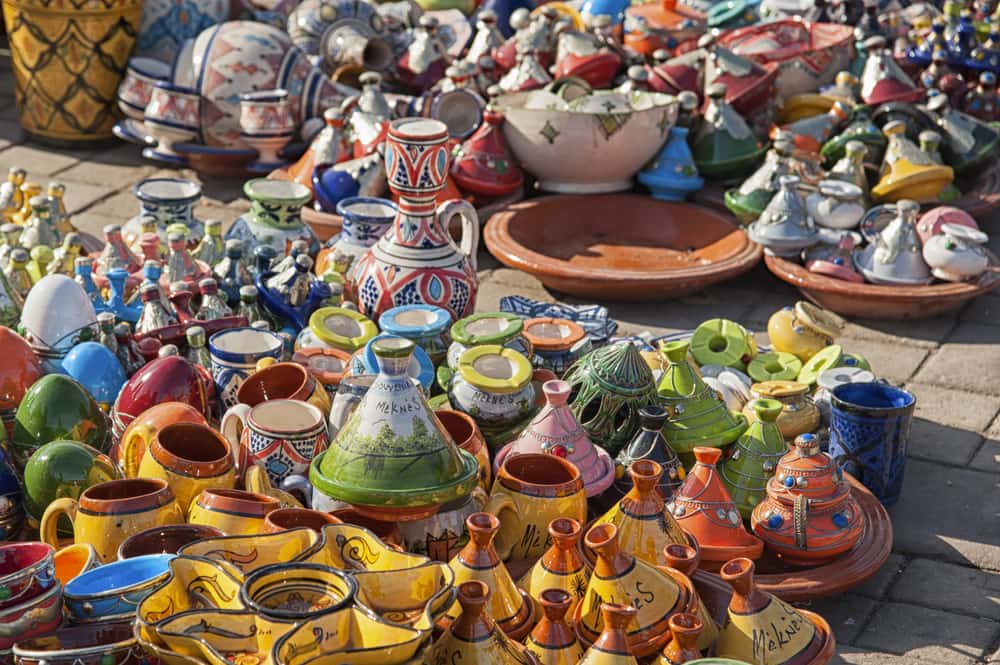
- Handmade Carpets
The souks of Meknes are renowned for their handwoven carpets, made by local artisans. Moroccan rugs are a great souvenir and come in a variety of styles, including the geometric designs of the Beni Ourain carpets or the vibrant colors of Berber rugs.
- Pottery and Ceramics
Meknes is famous for its pottery, especially the blue-and-white Fez ceramics. These handcrafted pieces often feature traditional Moroccan motifs, making them a beautiful and functional souvenir.
- Leather Goods
Morocco is known for its high-quality leather, and Meknes is no exception. You can find a wide range of leather products in the souks, including shoes, bags, belts, and wallets. The leather is often hand-dyed and stitched, making each item unique.
Nightlife and Entertainment
While Meknes doesn’t have a bustling nightlife like Marrakesh or Casablanca, it offers more laid-back evening entertainment options.
- Rooftop Bars
Meknes has a few rooftop bars where you can unwind with a drink while taking in views of the city. These spots are perfect for a relaxed evening, offering a mix of traditional Moroccan tea and cocktails.
Tip: Head to a rooftop bar in the Ville Nouvelle for a more modern atmosphere, or find one in the medina for a quieter, more traditional experience.
- Traditional Music Performances
Some riads and restaurants in Meknes offer live performances of traditional Andalusian music or Gnawa music, giving visitors a taste of Moroccan culture through its sounds. These performances are often accompanied by traditional instruments, such as the oud or drums.
Day Trips from Meknes
Meknes serves as a great base for exploring nearby sites, from ancient Roman ruins to sacred towns.
- Moulay Idriss Zerhoun
A short drive from Meknes, Moulay Idriss Zerhoun is an important pilgrimage site and offers panoramic views of the surrounding countryside. You can wander through its narrow streets, visit local markets, and experience the town’s spiritual significance.
- Volubilis
The Roman ruins of Volubilis, located 30 minutes from Meknes, are a must-see for history lovers. The well-preserved mosaics and grand structures make this UNESCO World Heritage Site one of Morocco’s top attractions.
Art and Culture
Meknes has a rich artistic heritage, and several cultural sites are worth visiting.
- Dar Jamai Museum
Housed in a 19th-century palace, the Dar Jamai Museum showcases a wide range of Moroccan art, including textiles, ceramics, and woodwork. The building itself is an architectural marvel, featuring beautiful courtyards and intricate tilework.
- Artisan Workshops
Many local artisans in Meknes work in traditional crafts such as weaving, pottery, and leatherwork. Visiting their workshops gives you a firsthand look at how these beautiful products are made. Some workshops even offer demonstrations or the opportunity to try your hand at crafting.
Practical Tips for Meknes
Traveling to a new city can be overwhelming, but these practical tips will help ensure a smooth and enjoyable experience in Meknes.
Language and Communication
The main languages spoken in Meknes are Arabic and French. In tourist areas, many locals speak basic English, but learning a few key phrases in Arabic or French can be helpful:
- “Shukran” = Thank you (Arabic)
- “Bonjour” = Hello (French)
Currency and Payment Methods
- Currency: The Moroccan Dirham (MAD) is the local currency. ATMs are available throughout the city, but it’s a good idea to carry some cash, especially for smaller purchases in the souks.
- Credit Cards: Credit cards are accepted in most hotels and larger restaurants, but smaller vendors may only take cash.
Safety and Local Etiquette
- Safety: Meknes is generally a safe city, but as with any travel destination, it’s important to stay vigilant, particularly in crowded markets. Keep an eye on your belongings and avoid flashing large amounts of cash.
- Local Customs: Morocco is a conservative country, so dress modestly, particularly when visiting mosques or religious sites. Women should cover their shoulders and knees.
Health and Hygiene
- Water: It’s recommended to drink bottled water to avoid stomach issues. Bottled water is readily available in shops and hotels.
- Vaccinations: Check with your doctor about any recommended vaccinations before your trip. Common recommendations include Hepatitis A and Typhoid, particularly if you plan to eat street food.
Transportation Within Meknes
- Walking: Many of Meknes’ main attractions are within walking distance, particularly in the medina. Wear comfortable shoes, as the streets can be uneven.
- Petit Taxis: These small, red taxis are the best option for getting around the city. They are affordable and convenient but ensure the meter is running before starting your journey.
Conclusion
Meknes is a city that offers a unique blend of history, culture, and Moroccan charm. Whether you’re walking through the narrow streets of the medina, admiring the grandeur of Bab Mansour, or enjoying a traditional Moroccan meal, there’s something for everyone. The city’s relaxed atmosphere, combined with its rich cultural heritage, makes it an unforgettable destination for any traveler.
When planning your visit to Meknes, be sure to consider the best time to go based on your interests, choose accommodations that match your style, and explore both the well-known landmarks and hidden gems the city has to offer. Meknes truly has it all—from ancient history to modern comforts—and promises to leave you with lasting memories.
Now that you’re ready to experience Meknes, the next step is to explore its rich array of attractions, immerse yourself in the local culture, and make the most of your trip.
FAQs
What is the main gate of Meknes?
The main gate of Meknes is Bab Mansour, completed in 1732 under Sultan Moulay Ismail. It is known for its grand size, intricate tilework, and beautiful marble columns. Bab Mansour is considered one of the finest examples of Moroccan architecture.
What are some interesting facts about Meknes?
- Meknes was the imperial capital under Sultan Moulay Ismail.
- The Medina is a UNESCO World Heritage Site.
- Meknes is famous for Bab Mansour, one of Morocco’s most iconic gates.
- The city is close to Volubilis, an ancient Roman site.
- Meknes is known for its olive oil and wine production.
How old is Meknes city?
Meknes is over 1,000 years old, founded in the 9th century. It gained importance in the 11th century and became the imperial capital under Sultan Moulay Ismail in the 17th century.
